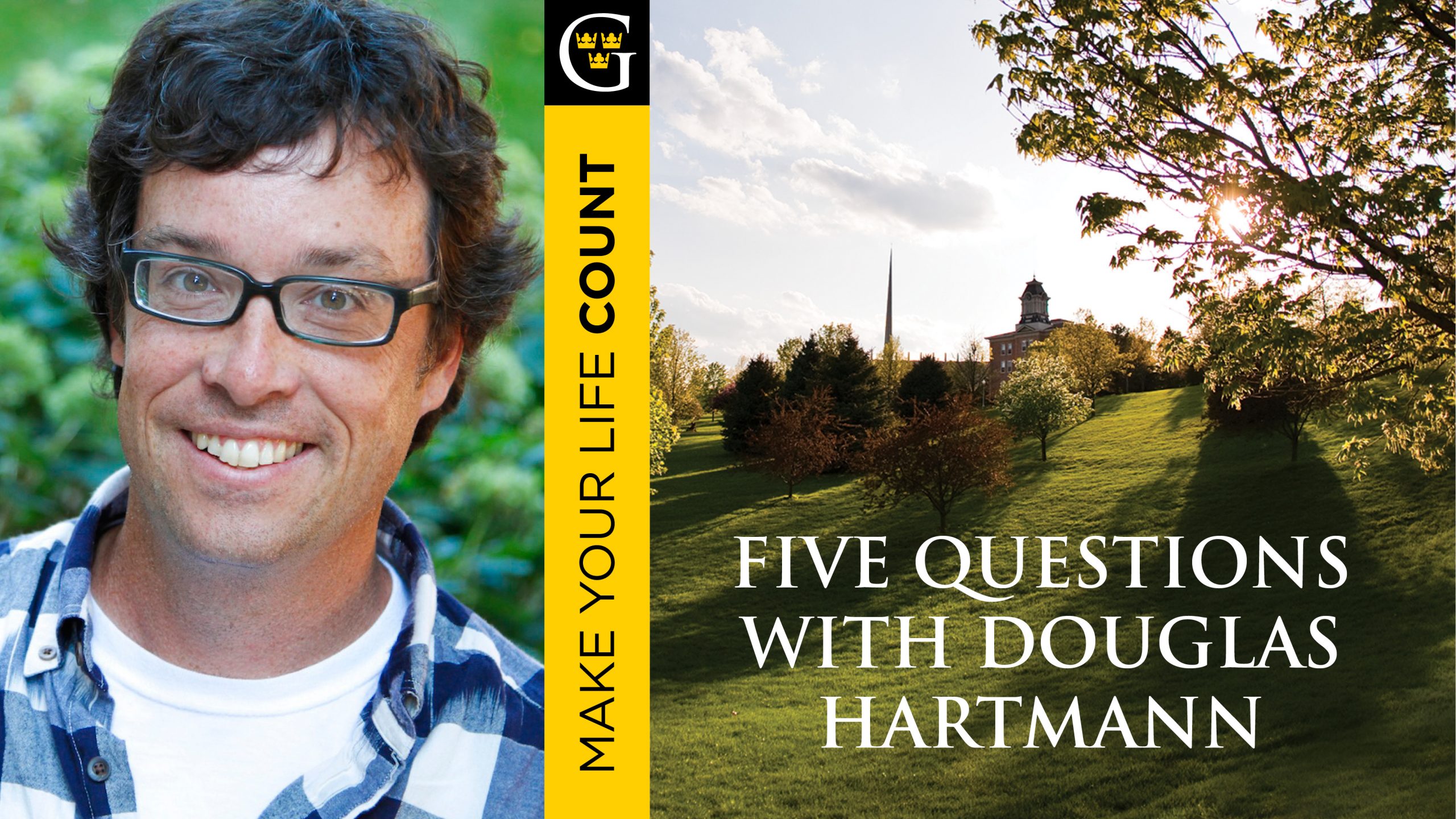University of Minnesota professor Douglas Hartmann is a cultural sociologist and international expert on race and sport. He has written extensively on the subject, particularly in his book Race, Culture, and the Revolt of the Black Athlete, and in his latest book, Midnight Basketball: Race, Sports, and Neoliberal Social Policy.
He speaks on campus Thursday evening (7 p.m., Wallenberg Auditorium) on the topic of “Race and Racism in Sport: An Introduction to Difficult Racial Conversations.” The event is free and open to the public.
Here are five questions we asked him in anticipation of the event.
1. What are the most difficult conversations Americans are having around race and sports right now?
Probably those involving the African American athletic activism that has emerged in the last few years in the wake of the Black Lives Matter movement. The controversy, precipitated by Presidential tweets, over NFL players (not to mention some coaches and owners) taking a knee during the national anthem is just the latest and most dramatic example.
2. Why is race-related protest in sports so controversial, and/or problematic?
In part because all protest is controversial—indeed, the whole point of protest is that some folks feel something in the status quo isn’t working properly, that their complaints aren’t being listened to, and that they therefore have to take some kind of action if there is to be any hope for change. Activism, in short, is born out of conflict. Activism in sport is particularly controversial because we often think of sport as a somehow special place, almost off-limits to protest or politics of any kind. I’ll have a lot more to say about why this is the case and why I think it is so problematic in my talk on Thursday.
3. Historically, what parallels are there to today’s race-related sports protest, specifically from NFL player Colin Kaepernick? How have we seen this before, and what is different now?
The last great wave of black athletic activism came in the late 1960s, when African American athletes tried to organize a boycott of the 1968 Olympic games as a way to contribute to the civil rights movement. That movement culminated, in many ways, with Tommie Smith and John Carlos’s iconic clenched fist salute during the gold medal ceremony in Mexico City. The new wave of activism and awareness is very much in the tradition of using sport to contribute to larger societal struggles for racial justice. In fact, Harry Edwards, the sociologist who was a teacher and mentor to Smith and Carlos, has also been something of an advisor for Colin Kaepernick. Some key things that are unique and perhaps even unprecedented about this most recent wave of activism are: (1) it includes many more athletes across many different sports [and levels] than in the 1960s; (2) there is more public sympathy and support from white teammates, coaches, and even owners (as in the NFL this fall); (3) because of their positions and numbers as well as player unions in professional sports, athletes have been able to wield their power more effectively than ever before (witness the Missouri Tigers threatened football boycott). One thing that hasn’t changed: strong backlash and opposition from many sports traditionalists and in mainstream, mostly white America.
4. Particularly in Minnesota how does whiteness inform issues of race in our most commercially popular sports (Vikings, Timberwolves, Wild, and—perhaps—our Big 10 men’s equivalent).
Whiteness—by which I mean both a lack of awareness of how white privilege is directly connected to the disadvantages faced by people of color as well as the assumption that white cultural values, beliefs, and perceptions about the world are normative—is a huge part of the problems we white folks have in understanding African American athletic protests and issues of racism and inequality in society more generally. Colorblindness is also a problem as well, especially when our ideals or aspirations for a colorblind society get in the way of our ability to recognize the persistent problems of race, racism, and inequity all around us. These two actually combine in insidious ways in elite-entertainment sport, not only blinding us to the injustices experienced by others but actually allowing us to feel good about ourselves and our society, with all its flaws, while we are doing it.
5. Talk specifically about your upcoming talk: What can Gusties expect?
I’ll try to flesh out some of the ideas I’ve introduced here. I’ll also try to put them in somewhat broader perspective by talking about the racial demographics of American sport and how media representations of athletes of color often functions to reproduce many troubling racial stereotypes and beliefs in contemporary American culture. Along the way, I’m hoping to introduce Gusties to some ways of thinking that might help them have better conversations about both sport and race in their personal lives, and maybe even combat racism itself in society.

Leave a Reply
You must be logged in to post a comment.